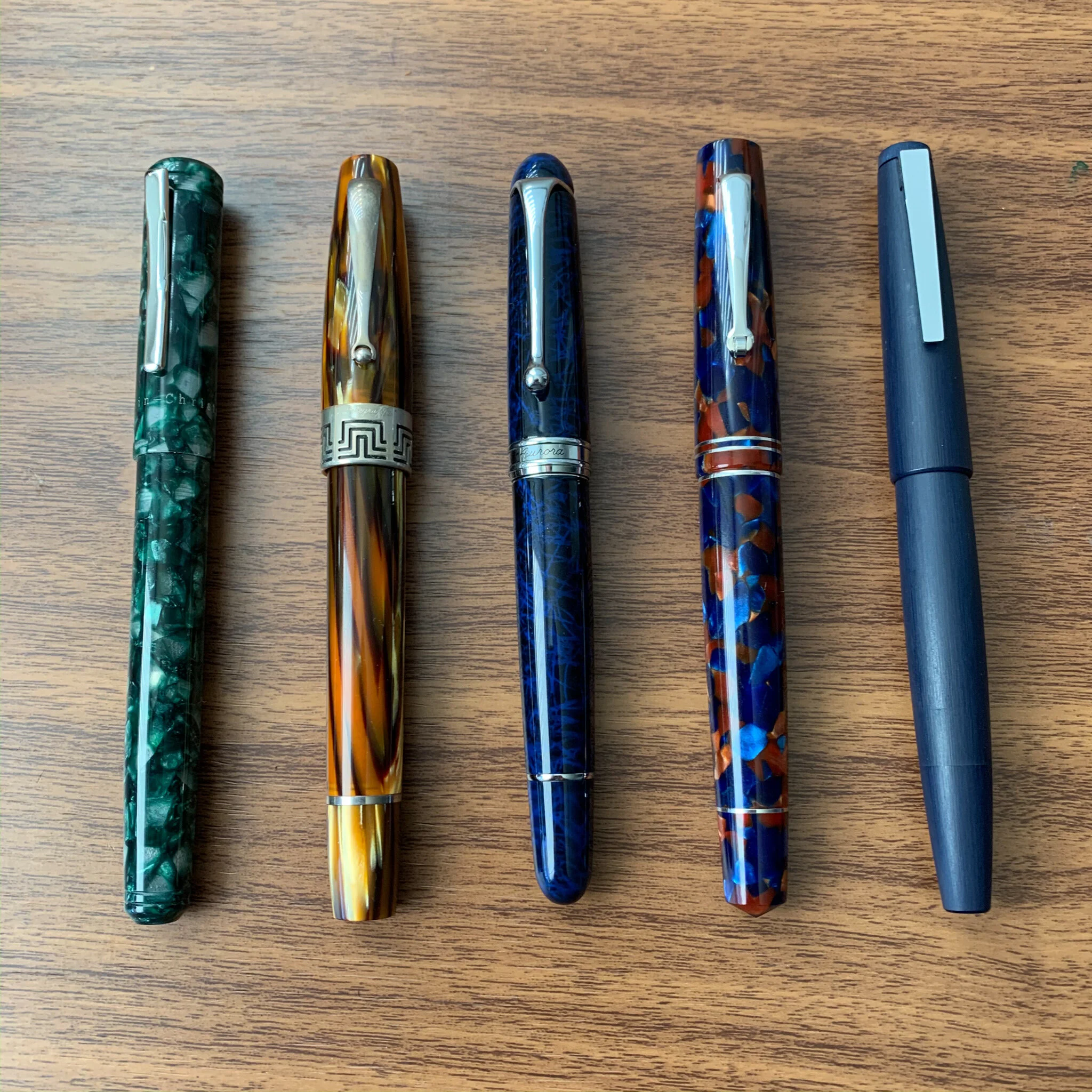Pen Show Season is here, and I’m about to kick things off by heading to Philadelphia late Thursday night for the 2020 Philly Pen Show! Philadelphia is the first show of the year, and I’ve never been able to attend despite hearing great things. What am I looking forward to the most? Just hanging out and walking the show. I’m not working for anyone this time, and while I plan to make time to meet up with readers and Patreon supporters, I don’t have any set obligations, much less a list of anything specific that I’m looking for. The lack of a plan, of course, can be a recipe for disaster at a pen show, but this year feels different.
My One-Pen Challenge(s) and the Year of Reducing My Stationery Hoard
Why? As I previously mentioned, I spent some time around the New Year sorting through my pen collection/accumulation and cutting things hard. I have all sorts of pens, inks, and paper queued up to list for sale throughout the year, and I don’t regret any of it. One of my main themes for 2020 is to acquire and hold onto less stuff, which in my case necessarily involves taking a deep dive into the dozens of pens that remain in my collection and figure out what I want to keep before I cut even more. It bothers me to have pens I like sitting unused for over a year, simply because there’s no feasible way for me to rotate through them. Committing to a quarterly sale, and having a hard backstop like Patreon supporters who have paid to participate in these sales in a timely manner, will keep me honest with myself. My goal is to eventually get to 12-24 pens in my personal collection.
So how do I decide to thin the herd? The only way, in my opinion, is to spend extended periods of time with a pen, compared against a pen that I know I love and will always have in my collection. Here’s what I plan to do:
Limit the Number of Pens Inked. I have to do this, otherwise, it gets stressful because I feel that I have to write each pen dry and I flit back and forth between a dozen different pens and don’t focus on anything. Having no more than 5-6 pens inked at any given time, and carrying no more than 3 with me on a daily basis, will allow me to focus better, not just on evaluating my own pens but on providing more in-depth review content here.
The “One Pen” Challenge. Have one pen that’s with me all the time, all year long, and use this pen as the baseline against which I evaluate others. For me, that pen is going to be a Lamy 2000 with an EF nib, probably my Blue Bauhaus 100th Anniversary edition since it has the best-writing nib in my small collection of Lamy 2000s.
The “Monthly Pen” Challenge. Choose one pen that will stay with me for the month and not get swapped out of the six-pen rotation, even if the pen runs out of ink. For the month of January, that pen is the Leonardo Momento Zero Grande Arlecchino.
Monthly Change-Up. At the end of the month, clean and ink 5 new pens, including a “monthly pen.” Take note of what pens I’m using, what pens I’m not using, and why. If a pen doesn’t work for me anymore, it goes on the block in the next quarterly sale.
Pen Show Goals for 2020
So what am I going to be up to at pen shows this year? Hanging out with people. Taking pictures and checking out new review items for the blog. To the extent I acquire anything, I love the idea of picking a single model of vintage pen that I can use to create a “mini-collection” within my personal collection, as Jacklyn discusses in her recent blog post. I may take a class or two with Salman and Azizah of the Toronto Pen Company, which is something I’ve never done before at a show. As with most pen shows, you’ll find me in the hotel bar most nights, and I’m signed up for the Pen Mixer at 6pm on Saturday. I’m still pulling together pens I’m taking to Philly for Pen Show Show-n-Tell, so feel free to send me a message if there’s something in particular you want me to bring.
My pen show travel over the rest of the year is also starting to take shape. In addition to Philly, I plan to attend the Baltimore Pen Show (Feb. 28-March 1); Arkansas Pen Show (March 13-15); Atlanta Pen Show (April 3-5); D.C. Pen Show (July 30-Aug. 2), and since D.C. is early this year, possibly the San Francisco Pen Show (August 28-30).
So What Am I Going To Do With All The Pens I’m Selling?
The TGS “Gently Used” Sale will go live to the general readership on February 1, 2020. Currently, the sale is open to Patreon supporters as one of the benefits they receive through that program, along with progressive discounting depending on the level of support. Pens listed for sale include some special edition Pilot Vanishing Points, a matte black Leonardo Momento Zero, an Esterbrook Estie, and nearly three dozen bottles of ink, most of which have had 1-2 fills taken, max. I’ve priced all of these items aggressively, with the goal of giving my readers and supporters as good a deal as I can while still accomplishing my goal of shoring up blog finances for the year ahead.
I hope to see you all in Philly, and if you’re headed to the show, safe travels!
Disclaimer: This post contains links to paid sponsors and affiliates.


